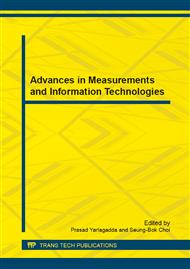p.472
p.476
p.480
p.489
p.496
p.502
p.506
p.512
p.517
A Evaluation Method of System Performance Based on Cloud Theory
Abstract:
During the evaluation of multi-source information system, uncertainty exists widely. In order to use and process the uncertainty and improve the creditability of system evaluation, this paper based on the cloud theory, studied the mapping method between nature variable and quantity variable. At the same time, the paper promoted a novel evaluation method of system performance based on the cloud theory. Finally, an example validates the process and feasibility of the method. The method exploits new application field for the cloud theory.
Info:
Periodical:
Pages:
496-501
Citation:
Online since:
February 2014
Authors:
Price:
Сopyright:
© 2014 Trans Tech Publications Ltd. All Rights Reserved
Share:
Citation:


